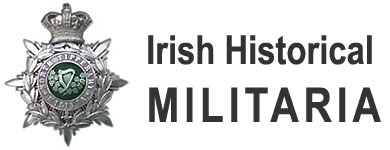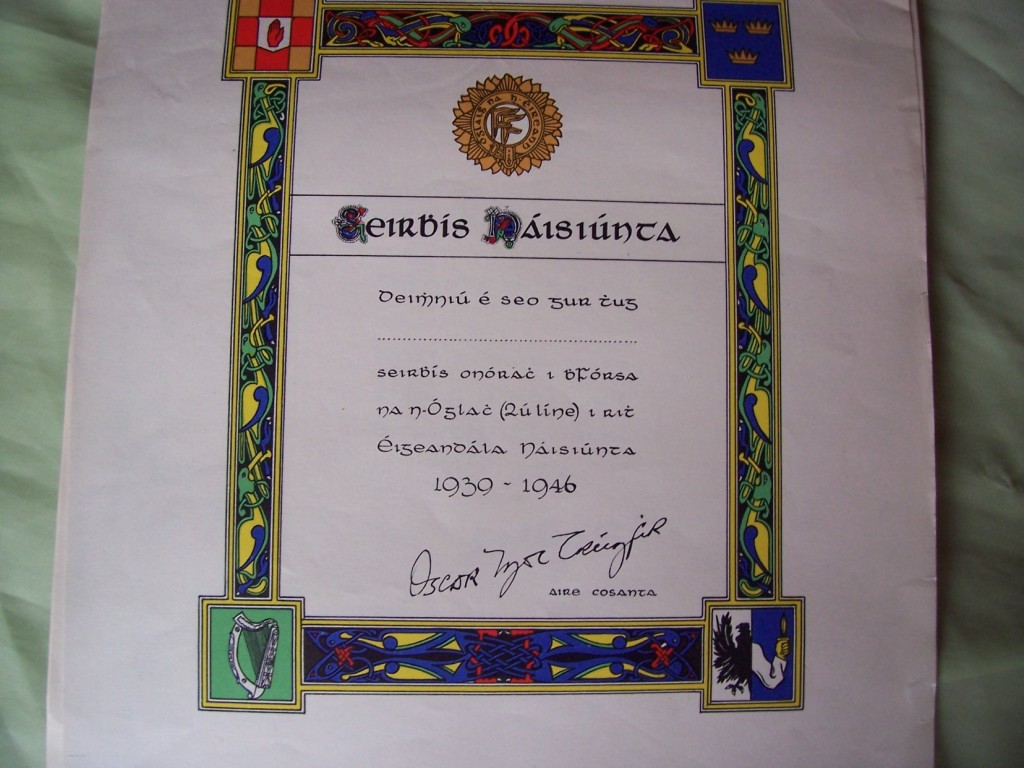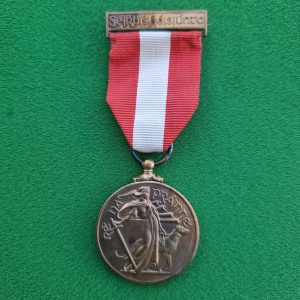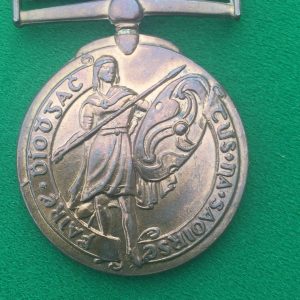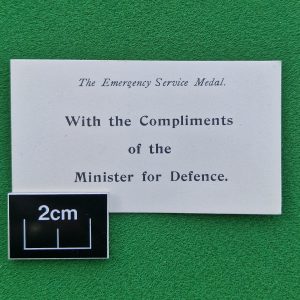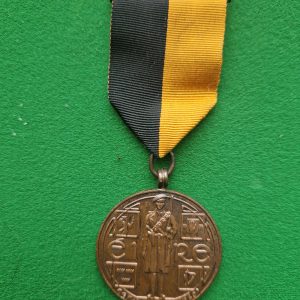Description
Original certificate issued to a member of the Irish Army Second Line volunteer Reserve, for service during the Second World War or what is known in Ireland as the “Emergency”
Who were the members of the Second Line Volunteer Reserve ? In Irish they were known as” Forsa na nÓglach 2ú Line” “When the peacetime reserves of the army were called out for fulltime service at the start of the Emergency period, their place was taken by the Second Line, a wartime creation. It consisted of infantry, field engineers and medical units, all of the members being men and women of quite mature years.” (Quoted from Decorations and Medals of the Republic of Ireland page 32 by Eamonn O’Toole)
This genuine certificate was given along with the Emergency medal (second Line volunteer Reserve) On offer here is an authentic and previously un-issued certificate dating back to 1946 when these medals and certificates were presented to those who served for the appropriate length of time in the Irish navy reserve. The certificate which is printed in vivid and still fresh, unfaded colours, measures about twelve inches by thirteen inches and is printed on cream good quality parchment type paper. The attractively coloured boundary motifs on each of the corners are the emblems of the four Provinces of Ireland, Ulster, Munster, Leinster and Connaught. The borders are designed with typically Irish Celtic interlacing designs similar to those found in the Book of Kells and other similar early Irish illuminated manuscripts. The central motif is the “Fianna Fail” emblem within a belt which reads “Oglaig na hEireann”. This is all surrounded by a golden rayed sunburst. This is the badge of the Irish Volunteers and which continues to this day as the national badge of the Irish Defence Forces. The writing is all in Gaelic script and translates into English as follows:-
“NATIONAL SERVICE”
THIS CERTIFIES THAT (Blank space for filling in name) GAVE HONOURABLE SERVICE IN THE Ssecond Line Volunteer Reserve DURING THE NATIONAL EMERGENCY 1939-1946.
Finally the certificate carries the signature of the then Minister for Defence, Oscar Traynor.
This is a wonderful and original item not a copy and would be ideal to frame and even better if you had a medal to go with it.
Some historical notes on Oscar Traynor (1886-1963) He was born in Dublin 1886 into a Nationalist family. His father, was a book-seller with a shop on Essex Quay. In his earlier days Oscars father was a Fenian and was closely associated with Charles Stuart Parnell, Traynor’s dad being one of the men who lowered Parnell’s coffin into his grave. In 1914 Traynor joined F Company of Second Battalion of the Dublin Brigade.
Oscar Traynor was very involved in the fighting in Dublin in 1916. His company assembled at Fairview. By the Tuesday afternoon of Easter Week, they were ordered to break through to the GPO. Traynor was in charge of 22 men who were deployed at a block of buildings from Princes Street to Manfield’s Corner at Abbey Street . Having fought from Tuesday of Easter week, Traynor was with the group that evacuated the GPO to Moore Lane and there surrendered. Shipped to England, and interned at Knutsford, he was later transferred to Frongoch and released on Christmas Eve, 1916.
On his release from prison he once again became involved in the struggle for Independence and he rose to a senior rank in the Dublin Brigade of the Irish Volunteers. Involved in many daring events during the struggle for independence, he is probably best remembered at this time for the 1921 attack on the Custom House in Dublin.
During the civil war he took the Republican side (irregulars) where he was equally noted for a number of events such as his involvement in the Four Courts conflict. He was eventually imprisoned by the Free State side and was subsequently released in 1924.
Traynor continued his involvement in politics and became a TD entering government with Fianna Fail in 1932. In September 1939 he became the Minister of Defence and was key in organising a massive expansion of the army and he is recognised as providing a well trained force. After the second world war he was responsible for demobilisation of the same forces that he had established. In 1947 he established the Bureau of Military History. It is from this organisation that Irish historians derive much of their historical evidence for the Irish War of Independence. On his retirement from the Irish Cabinet in 1961 he was succeeded by Charles J. Haughey. Oscar Traynor had a life long interest in soccor and in 1948 he became president of the Football Association of Ireland. He died in 1963 in Dublin.
